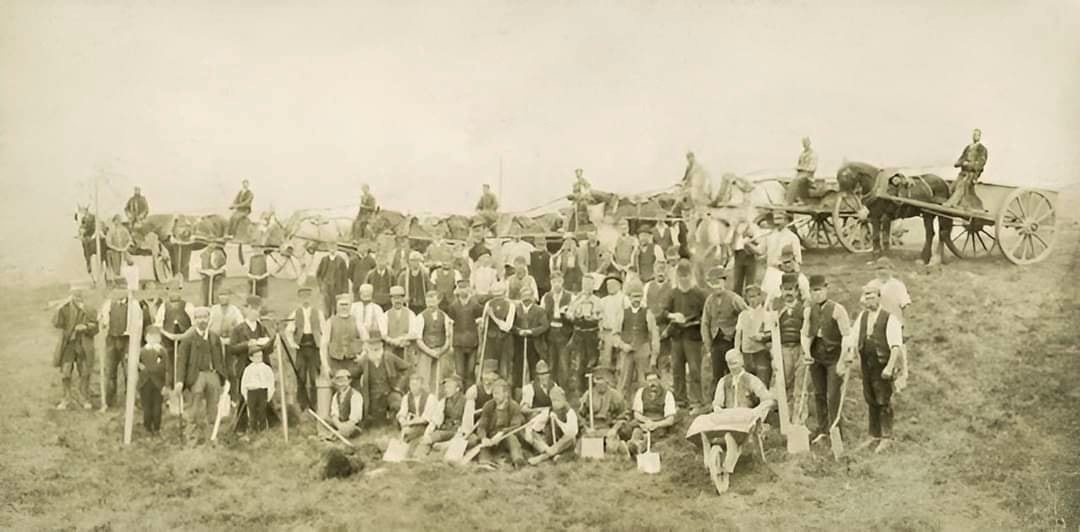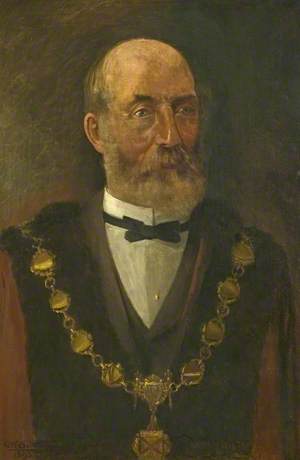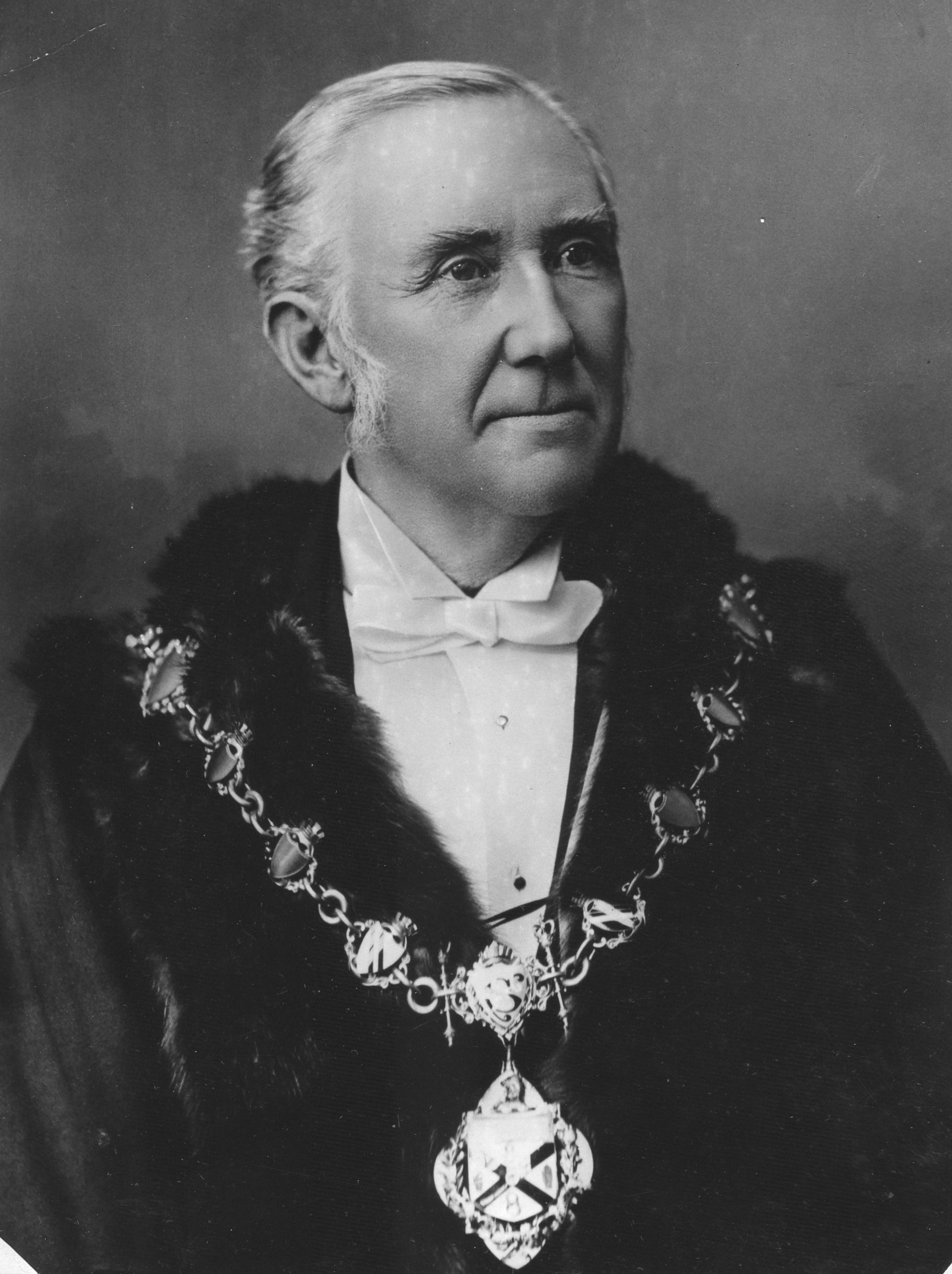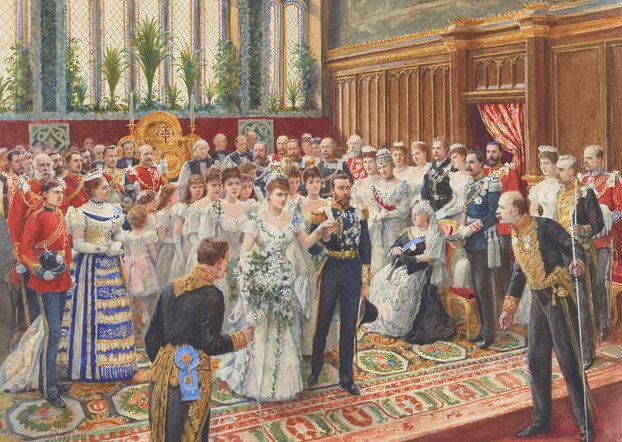… the quest for a new cemetery site was finally concluded
“1891 ….. and in with the New“
A new cemetery
By July 1891 a new ‘cemetery site‘ had been identified; it was 22½ acres of glebe land, lying east of the parish church, on what locals knew as ‘Hilly Hollies’. As well as accomodating the new cemetery, some of the land would be held in reserve and some used for building and other purposes. This time a loan of £5000 was needed … as was another public enquiry to approve this.
At this inquiry the rapidly growing population of the town was cited as need for the cemetery and the loan, as was the growing indebtedness of the Borough, caused by spending on gas and water schemes, the sewage farm, public buildings. And there just wasn’t sufficient space to bury all the bodies !! Part of St. Mary’s Churchyard had been closed since 1856, by order of the Privy Council, while the rest of the graveyard was so overcrowded that paths were being used for graves, some coffins being put in water, or too close to the surface, one on top of another. The graveyard at Christ Church, Cotmanhay, was three-quarters full, while the private cemetery in Stanton Road was similarly full. And there was no graveyard in the parish of Holy Trinity.
All possible spendings were laid out — £150 per acre for the land, fences around and paths within the cemetery, surface drainage, planting of trees, foundations for two chapels (although for the two buildings another loan would be needed), and a new road leading to the burial ground.
In September 1891 the site and loan were approved by the Local Government Board. Of the 22½ acres, 10 acres initially would be used for the cemetery, 6½ acres would be held in reserve for cemetery extension, and the rest would be sold off over a period of five years.
And work begins in 1891 (Seaman and Sons)
This cemetery was to be Park Cemetery, which many now recognise at the end of Park Avenue.
This choice meant that several old pathways which crossed the site would be closed, and new roads would be constructed, so that vehicular and pedestrian access would be facilitated. One of these new roads, running northwards and then eastwards from Nottingham Road was later to be Dale Street, which would then join with another new road, running northwards and joining Park Road; it was already, by 1892, in construction and was to be named Park Drive.
In that year the Cemetery Committee of the Town Council invited the Bishop of Southwell to join with resident minsters in a dedicatory service of the new cemetery. By that time the Council had decided not to consecrate any part of the new cemetery so that, in a letter dated July 19th, 1892, because of this decision, the Bishop declined to take part in this service. His refusal was yet another occasion when Councillor Charles Mitchell could criticise some of his fellow councillors, stating that the Bishop should never have been insulted by asking him to take part in the dedication in the first place.
Just over a month after the Bishop’s refusal — on Wednesday August 31st — the new cemetery was publicly dedicated, though the occasion was boycotted by the Anglican ‘churchmen’ of the town, including the Church members of the Town Council (and the Mayor John Moss was absent also). “However, nobody seemed one penny the worse by reason of their absence” (Derby Daily Telegraph).
Several nonconformist clery were present however — Thomas Roberts (Wesleyan), James Bainton (Congregationalist), William Evans (United Methodist Free Church). J. Hardy (Primitive Methodist). It was left to Councillor Joseph Scattergood to declare the cemetery open to interments, and after a final hymn the proceedings terminated.
The Borough Surveyor, James Henry Kilford, had ‘tastefully’ laid out an area of 12½ acres for burials, enclosed with an iron railing, and planted with trees and shrubs. The total cost was now estimated at £7500, including the lodge and chapel, which were expected to be built by the spring of 1893. Don’t hold you breath !!!
At the next Town Council meeting a few days later, Councillor Charles Mitchell (who else ?!!) raised the question of why members of the Council had not been invited to the opening ceremony of the new cemetery. The Mayor indicated that he had not been asked to attend but would have done so had he received an invitation. It was also noted that the the Vicar of St Mary’s was organising a petition, asking the Council to reconsider its decision and permit the consecration of part of the cemetery.
October 1891: A couple of new records
At the Council meeting of October 6th, the Mayor congratulated the Councillors upon their meeting that day — it was the shortest yet held !!
And then at the end of the month, for the forthcoming Council elections, there were only two candidates for each ward. No contests !! Except for Edwin Sutton, all candidates were Liberals. The Mayor, William Tatham, commented upon the ‘unanimity shown in these elections this year‘ — this would save the town ‘considerable expense’. It was the first time that contests had been avoided in any ward.
November 1891: A new mayor
Behind closed doors, John Moss (1824-1894) was nominated and selected to be Ilkeston’s Mayor for 1891-92.
John Moss (Erewash Borough Council)
And in similar fashion, at the same time in the following year, Alderman William Merry was chosen as John Moss’s successor mayor for 1892-93
William Merry
1892
New qualifications
On April 28th 1892, along with many other candidates, Henry James Kilford, the town’s Borough Surveyor, attended a two-day, oral and written examination, organised by the Sanitary Institute at Derby — for ‘local surveyors’. At the culmination, Henry emerged as ‘certified to be competent as regards sanitary knowledge sufficent to discharge his duties’.
And in October of the same year, the Council’s Town Clerk, Wright Lissett, passed preliminary examination and was admitted a student of the Honorable Society of the Middle Temple in London — the firststep necessary to qualify him as a barrister-at-law.
November 1892; new no elections ??
Perhaps a misleading heading. By this time there seemed a distinct lack of interest among the Ilkeston’s Conservatives in fielding prospective representatives, for the municipal elections — for the second year in succession. As usual six councillors had to resign, but not one of the Conservatives either wanted to stand again or, if opposed, would stand for re-election. Thus six Liberal candidates (or Radicals as the Derby Mercury named them) were nominated for the vacant posts, and so there was no subsequent contest.
November 1892: A new Public Library for Ilkeston ?
The issue of providing a ‘Free’ library for the town had been raised several times, both in the distant and more recent past (as in 1889) … the latter attempts being spurred on by Councillors Charles Mitchell and Joseph Scattergood. Now, in 1892, the Central Government had just enacted the Public Libraries Act and some Town Council members thought it might be time for another attempt. The first step would be a vote to adopt the new Act, and after a public meeting, a poll of the town was agreed. The result was decisive — for Adoption 532, against 1284. So Ilkeston had voted to reject a Public Library; the issue was ‘kicked down the road‘ and didn’t reappear until the next century !!
“The result is to be earnestly deplored on all grounds” exclaimed the Derby Daily Telegraph. “We trust that a short time only will elapse before the voting ratepayers will be brought to see the error of their ways, and will, by an adequate majority, reverse the decision at which they have arrived. Their recent vote can only mean one of two things. Either they are quite satisfied with the facilities for obtaining access to literature which they at present possess, or else they desire to remain in intellectual darkness … we can only hope that the first of these suggestions is the accurate one”.
And for the Hucknall Morning Star and Advertiser it was clear that “Ilkeston did not improve its reputation” by this result.
——————————————————————————————————–
Crime Report: November 1892
Offender: Mary Cunningham.
Offence: Stealing water
Details: Thomas Poxon, Collector of tolls for Ilkeston Corporation, had seen the accused surreptitiously taking water from a tap near the Bridge Inn on Awsworth Road, and then carting it to the Jolly Boatman, which was not supplied by the Corporation.
Sentence: a fine of 10s plus 11s 6d costs, or 14 days imprisonment
——————————————————————————————————–
1893: a new year
The occasion of a Royal Marriage was approaching. Prince George, Duke of York, and Princess Mary of Teck were to be married at 12:30 on 6 July at the Chapel Royal at St James’s Palace and this was a subject of discussion at the July monthly meeting of the Council. It was suggested that the front of the Town Hall be illuminated for two hours on the day … but step forward Councillor Joseph Scattergood. He regarded this as a needless waste of public money at a time when there was much distress; it would not be pleasant for the ratepayers to stand and watch their ‘property’ burning. As an alternative he proposed that the money be used to provide a tea for the town’s old people. He was supported by Benjamin Gregory, William Hollis and, of course, by Charles Mitchell who eloquently stated that “them that want it should pay for it !!” The objections were defeated and the original proposal was accepted without a vote. (It was estimated that only £2 or £3 pounds would be the expense). At the previous month’s Council meeting Councillor Mitchell had objected to the proposal that a ‘loyal address’ be sent to the Royal family, offering congratulations on the approaching marriage — his objection was based on his notion that “there is no love in the marriage”. Benjamin Gregory added that he did not know what these ‘young people’ had done for the country that they should be congratulated; to him the address was just ‘tomfoolery‘. Charles and Benjamin were two lone voices, drowned out by the rest.
Festivities for the day were planned and the Mayor and Mayoress started a fund which eventually accumulated £40. The hope was to give ‘centre stage’ to the Sunday School children who would parade around the town and then enjoy a tea, together with the old people of the parish. However the funds were insufficient to provide for both groups, and so the old people were left out !! The brass bands of Shipley and Cotmanhay, the Temperance Group, the Salvation Army and the Borough Prize Band led their separate groups of children around different routes, converging on the Market Place for a grand meeting. After this the children dispersed to their own premises for tea, followed by outdoor games. (The Vicar of St. Mary’s Church had declined the invitation for his Sunday School to take part however)
In the evening the bands played outside the Town Hall, under a huge flagstaff displaying the new flag bought for this (and any future) special occasion. And of course the gas illuminations went ahead from 10 o’clock until midnight.
On the day of the marriage (Thursday) many of the town’s main shopkeepers had decided to close for the half-day rather than the usual Wednesday early-closing.
By Amadée Forestier (1854–1930)
——————————————————————————————————-
August 1893: new medical facilities needed ?
Dr. John Joseph Tobin was called to an inquest at the Nag’s Head in South Street to give an opinion into the death of 2-month-old Arthur Gretten, son of Thomas and Jemima (nee Wright) in West Street. He had had to conduct a post-mortem and during his testimony he complained of the absence of any accommodation in the town for the examination. He didn’t know whether it was a question for the local or county authorities. The Coroner was very glad that the doctor had raised the issue and confirmed that it was an issue for the local authority; he was very much surprised that in a place like Ilkeston no mortuary was provided, as very often the jury had to view bodies under the most awkward of circumstances.
October/November 1893 … and a new Mayor needed
Alderman Frederick Beardsley, lace manufacturer of Cotmanhay Road, was offered but declined the position.
In the following month Francis Sudbury, who had served as Mayor in 1887-8-9, was chosen to serve a third time. And so, on the last Sunday in November, Francis once more took the short walk from the Town Hall down to the Independent Chapel in Pimlico to attend service … accompanied by the members of the Corporation and School Board, the fire brigade and a detachment of police (I don’t think either a fire or a riot were anticipated !!!)
November 1893 … new no Council elections … again !!!
In October it appeared that, unlike in the previous year, there would be contested elections in several of the town’s wards. But don’t speak too soon !!
In the North Ward four names were originally put forward for the two seats; two Liberal candidates versus two nominees of the Ratepayers’ Association. However the Liberals swiftly objected that the nominations of their rivals were not valid. On his nomination paper William Manners Manners, one of the candidates for the Ratepayers, had written his address as ’22 Cotmanhay Road‘ and had not included the name of his town, as he should have done. Also the signature of his seconder was written as ‘Arthur John Taylor‘ when on the electoral register he appeared as ‘John Arthur Taylor‘. It was on this second discrepancy that William’s candidacy was declared invalid.
The second Ratepayers’ Association candidate was William Price whose proposer and seconder had both signed the nomination papers with an X but without any witnesses present. (obviously anyone could write an X !!) His papers were also declared invalid and the two Liberals, Nathan Buxton and Reuben Limb, were put forward unopposed.
In the Central and South Wards there were no contests. All this meant that the political complexion of the Council would be unaltered. Plus ça change.
November 1893 … but just wait a minute !!!
In November 1893 a by-election was fought in the South Ward of the Town Council, necessitated by the retirement of Walter Tatham. George Haslam had been temporarily absent from the Council but now decided to try to join it once more, and so he put himself up for election. Standing against him was one other candidate, an official Liberal, John Hancock, hosiery manager of Holmdale in Station Road; he had been nominated by the South Ward Liberal Association, which meant that George, also a Liberal, had to stand as an ‘Independent’. John had the support of Benjamin Gregory, the local miners’ leader and Town Councillor, while George had a good many Church folk and Conservatives backing him. On election day (November 28th) polling stations were set up at the Market Hall in the Market Place, at Gallows Inn and at Hallam Fields. The local press reported on ‘little public interest‘, so not a lot of votes to count ?! Only 495 of the electorate took time to vote, out of a total of 1196 — 41%, not bad by modern standards ?? In the event, George came out victor, with 332 votes to John’s total of 159.
And almost at the same time Samuel Richards, Conservative and grocer of Cotmanhay Road, was chosen to fill the place of the recently-deceased William Wade as an Alderman.
——————————————————————————————————-
The work of the Council continued …





